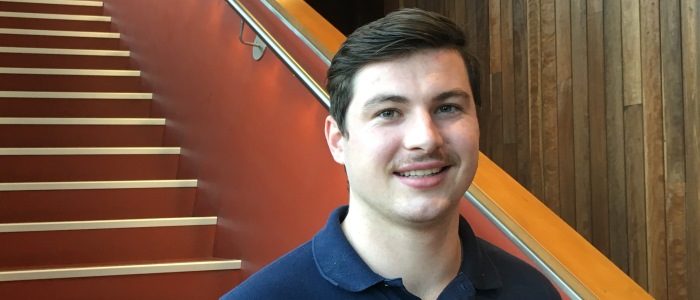News
3D printing bone tissue
Jun 28 2022
If you’re an avid fan of 3D printing technology, chances are you’ve already heard about our revolutionary BioPen that allows surgeons to sculpt customised cartilage implants in theatre.

Promising proof of concept trials in animals have people the world over—with osteoarthritis and other cartilage related diseases or injury—keeping a close eye on our team’s progress.
There’s a lot of big names involved—our very own Professor Gordon Wallace for one—but this is a story about the lesser known, but no less important contributors to this biomedical innovation.
Science graduate Malachy Maher joined ACES last year as a Masters in Philosophy (BioFabrication) student, giving him access and an opportunity to work on the high profile BioPen project.
A chance to contribute to the revolutionary BioPen project
“I was excited to be a part of the interdisciplinary team of leading researchers, engineers and surgeons working collaboratively towards joint cartilage regeneration,” Malachy said.
“The prospect of translating fundamental research into a solution to solve a real clinical problem is incredibly motivating. Walking into this project, it was interesting to learn how the team began, the problems that they had encountered and the path that they were looking at to move forward.”
Malachy’s project is all about 3D printing the gel scaffolds that promote the growth of joint cartilage.
“The beauty of the BioPen is that it uses two gel cartridges to create a core-shell structure, so we can grow the patient’s own cells in the core and use the outer shell for support,” he said.
“It’s difficult for the surgeon to know the size of the cartilage defect before operating. The handheld BioPen enables the surgeon to extrude the gel directly into cartilage defects during theatre with a very high cell survival rate.”
Making ‘inks’ for use in the BioPen
Malachy is focused on optimising the ink properties for printing, understanding the mechanical and diffusion properties of the printed structure and examining the cell viability that is achievable.
The ink he is using to grow the cells in is gelatin, like we see in foods.
“A natural compound is also added, which helps with the consistency of the ink and in promoting cartilage growth. In the core cartridge, we add stem cells, and in the shell we add a compound which allows us to UV cure the printed ink so that it becomes stronger.”
In ten months, through coursework and the support of the multidisciplinary ACES team, Malachy has been brought up to speed on a range of technical skills that underpin his research project.
Already, he has:
“My findings to date will hopefully assist the team in reaching the end goal of 3D printing cartilage,” he said.
Next stop… Netherlands, 3D printing cardiac muscle
Malachy will spend the next nine months on exchange at the University of Utrecht in the Netherlands where he will apply the skills he learnt at ACES to 3D printing cardiac muscle.
“Having the opportunity to study internationally with leading researchers is not only exciting but will equip me with the skills and connections necessary to translate research into solutions for real clinical problems,” he said.
“This emerging and revolutionary field offers many prospects in the future, many of which may not yet exist. I am confident that this program will position me well in the future.”













